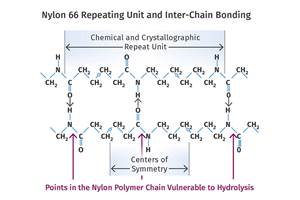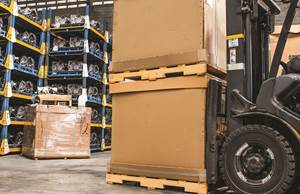Pricing Update - December 2006
Resin Prices Lower–For Now
Prices of commodity resins were falling in October and November.
Prices of commodity resins were falling in October and November. Despite a try for a December PE hike, industry observers expect another month or two of weak prices.
PE hike announced
Polyethylene prices dropped another 6¢/lb by early November. The decline in prices erased 11¢ worth of increases implemented earlier this year and possibly a couple of cents more. The London Metal Exchange (LME) December short-term futures contract for butene LLDPE for blown film dropped to 50.1¢ from November’s 52.8¢/lb. Nonetheless, at press time at least three suppliers–Dow, Nova, and CP Chem–issued price hikes of 6¢/lb for Dec. 1.
Contributing factors: Suppliers say orders for PE resins came to a stop in the second half of September, as a result of year-end inventory destocking throughout the supply chain–which occurred nearly two months earlier than usual. Some suppliers attribute this to inventory build-up in the second and third quarters. Explains one resin maker, “Several converters and resin distributors purchased at least a month’s inventory to secure against another major hit from hurricanes. As the hurricane season came to a quiet end, there was plenty of resin in the secondary markets and at converters.”
Meanwhile, October ethylene monomer contract prices settled at 48.5¢/lb, down 3¢ from September, and November contract bids were coming in 3¢ to 4¢ lower than that. Sources at purchasing consultant Resin Technology Inc. (RTI), Fort Worth, Texas, say lower monomer prices could drag PE prices lower too.
Suppliers maintain that market fundamentals will support firmer prices in the new year–hence the December price increase. “We see lower inventories across the chain globally,” says one resin producer. Domestic suppliers’ inventory levels, typically 45 to 60 days, are currently 35 to 40 days. RTI sources don’t see PE prices moving upwards until February at the earliest.
PP prices down
Polypropylene prices dropped an average of 3.5¢/lb by early November. LME’s December short-term futures contract for g-p injection-grade homopolymer also dropped to 50.4¢ from November’s 50.1¢/lb.
Contributing factors: Suppliers attribute the drop in PP prices primarily to the sharp decline in propylene monomer tabs, as well as resin inventory destocking in anticipation that PP prices will fall in parallel with monomer. Propylene contract prices for November dropped 9¢ to 40.5¢/lb.
At press time, some industry sources expected PP prices to drop even more before the year’s end. Sources at RTI saw the possibility of trimming another 5¢ to 6¢/lb off contract prices.
PVC prices sag
PVC resin prices fell 2¢/lb for most buyers in October, though some got an extra penny off. In mid-November, both processors and suppliers expect prices to drop another 2¢ or 3¢, depending on how much a buyer paid in October.
Contributing factors: With chemical feedstock prices dropping, PVC buyers stopped ordering and ran down inventories while waiting for resin prices to slip.
Up-again, down-again PS
PS producers bucked the general downtrend in resin and feedstock prices and raised prices 3¢/lb in October, only to drop them again by 3¢ in November. Huntsman and Nova tried for a 4¢ hike on EPS in November, but when BASF didn’t follow, the attempt flopped. EPS prices are expected to stay flat.
Contributing factors: PS demand is weak, especially in food service, which has lost some market share to competitive materials. Only durables like refrigerators, printers, and office equipment are holding up. EPS demand isn’t down as much as other construction materials.
Other hikes
Arkema lifted tabs on its Rilsan specialty nylons and Orgalloy nylon alloys by 4% last month. And CYRO hiked acrylic molding compounds by 10¢/lb on Dec. 1.
Thermosets up
AOC, Interplastic, and Hexion followed Reichhold’s lead in raising vinyl ester products by 5¢/lb last month. Hexion also followed Dow in hiking epoxy resins 7¢/lb in October.
| Market Prices Effective Mid-Nov A |
|
|
KEY: Colored areas indicate pricing activity. An arrow () indicates direction of price change. aTruckload, unless otherwise specified. bUnfilled, natural color, unless otherwise specified. cBased on typical or average density. dNot applicable. eNovolac and anhydride grades for coils, bushings, transformers. fNovolac and anhydride grades for resisitors, capacitors, diodes. gIn quantities of 20,000 lb. h19,800-lb load. jLME 30-day futures contract for lots of 54,564 lb.. |
Related Content
What is the Allowable Moisture Content in Nylons? It Depends (Part 1)
A lot of the nylon that is processed is filled or reinforced, but the data sheets generally don’t account for this, making drying recommendations confusing. Here’s what you need to know.
Read MoreThe Fantasy and Reality of Raw Material Shelf Life: Part 1
Is a two-year-old hygroscopic resin kept in its original packaging still useful? Let’s try to answer that question and clear up some misconceptions.
Read MoreAutomotive Awards Highlight Emerging Technologies
Annual SPE Automotive event gives nods to several ‘firsts’ as well as sustainability.
Read MoreGeneral Polymers Thermoplastics to Further Expand Distribution Business
NPE2024: Following the company’s recent partnership buyout, new North American geographic territories are in its sight.
Read MoreRead Next
Beyond Prototypes: 8 Ways the Plastics Industry Is Using 3D Printing
Plastics processors are finding applications for 3D printing around the plant and across the supply chain. Here are 8 examples to look for at NPE2024.
Read MoreFor PLASTICS' CEO Seaholm, NPE to Shine Light on Sustainability Successes
With advocacy, communication and sustainability as three main pillars, Seaholm leads a trade association to NPE that ‘is more active today than we have ever been.’
Read More









